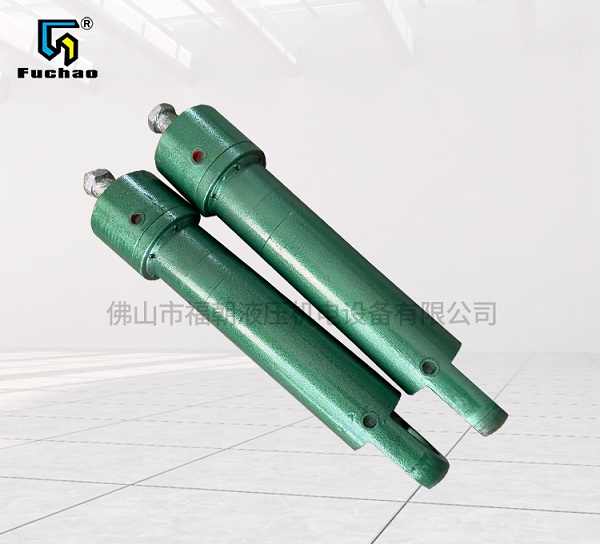1、 Hydraulic cylinder The location layout shall consider the convenience of disassembly
Hydraulic cylinder The location and layout of is generally determined by the structural form of the equipment.
When designing the main equipment, the needs of the installation and disassembly of the hydraulic cylinder shall be considered, and at least enough operating space shall be reserved to facilitate the operation of the hydraulic cylinder.
In the project, it is really difficult to maintain and overhaul due to the unreasonable arrangement of hydraulic cylinders, which must be considered in the overall equipment design.
2. Correctly determine the installation and fixation mode of hydraulic cylinder
For example, the bent piston rod cannot be connected with thread, but with a seam;
The hydraulic cylinder cannot be positioned at both ends with keys or pins, but only at one end, so as not to hinder its expansion when heated;
The impact load compresses the piston rod, and the locating part needs to be set at the end of the piston rod;
For tensile load, the spacer is set at the cylinder head end.
3. When fixing and installing the hydraulic cylinder, avoid fixing both ends
Generally speaking, the temperature of the hydraulic oil flowing through the hydraulic cylinder always changes, and there will be no problem when the temperature change is not too large.
However, when the oil temperature changes greatly, the hydraulic cylinder body will always have different degrees of thermal expansion and cold contraction.
If the hydraulic cylinder is fixed at both ends at this time, it may cause great stress on the cylinder body, or even damage the structure of the hydraulic cylinder,
Therefore, when installing and fixing the hydraulic cylinder, the installation method of fixing both ends should be avoided as far as possible.

4. Large hydraulic cylinders should not be loaded by mounting bolts
The output force of large hydraulic cylinder is generally large, and the main function of the mounting bolts of the hydraulic cylinder is to fix the hydraulic cylinder in the working position.
Of course, the bolt can bear a certain load. However, when the hydraulic cylinder is large and loaded heavily, the mounting bolts of the hydraulic cylinder should not be used to bear the load,
Because the load is very large at this time, the number of studs required to be installed is large or the bolt diameter is large, which will cause structural irrationality.
Other mechanical methods can be used to fix the hydraulic cylinder, such as adding blocks.
5. The mounting base of the hydraulic cylinder must have sufficient rigidity
The mounting base of the hydraulic cylinder must be firm and have a certain rigidity.
If the installation base is not firm, no matter how correct the installation method is, the hydraulic cylinder will be arched upward during operation.
In serious cases, the piston rod will be bent, stuck and damaged.
6. Hydraulic cylinder piston rod
Try to make the piston rod of the hydraulic cylinder bear heavy load under tension or have good stability under pressure.
7. The plunger cylinder of the hydraulic cylinder should not be placed horizontally
Although the plunger cylinder has the advantage of simple processing of the inner wall of the cylinder barrel, because the plunger cylinder can only bear pressure, the cylinder rod is generally relatively thick from the perspective of stiffness;
At the same time, its radial support point is also different from the ordinary hydraulic cylinder, which results in the large volume and weight of the plunger cylinder.
When installed in the horizontal position, the plunger is easy to be pressed on one side, causing unidirectional wear of the guide sleeve and the seal ring.
If it is really necessary to install horizontally, the plunger bracket shall be set to prevent the plunger from sagging, causing bending and increasing initial deflection, resulting in seizure.
8. Hydraulic cylinders with synchronous requirements should not be simply connected in parallel
Theoretically, synchronization can be achieved when the effective working area of two hydraulic cylinders is the same and the input flow is the same,
However, due to unbalanced load distribution, unequal friction, manufacturing differences and different leakage, they can all be out of sync.
Therefore, hydraulic cylinders with synchronous requirements should not be simply connected in parallel. In order to overcome the influence of the above factors, volumetric and servo synchronous control loops are generally used.



